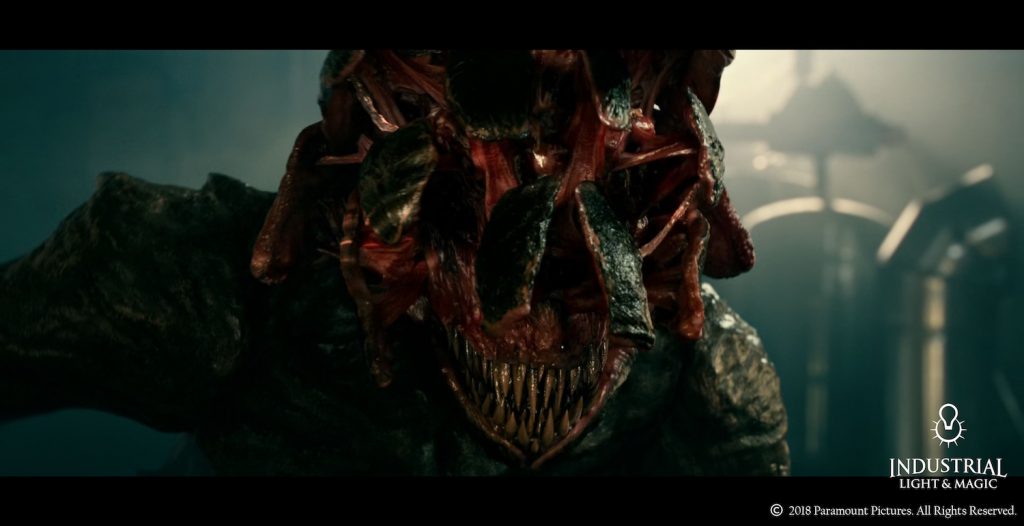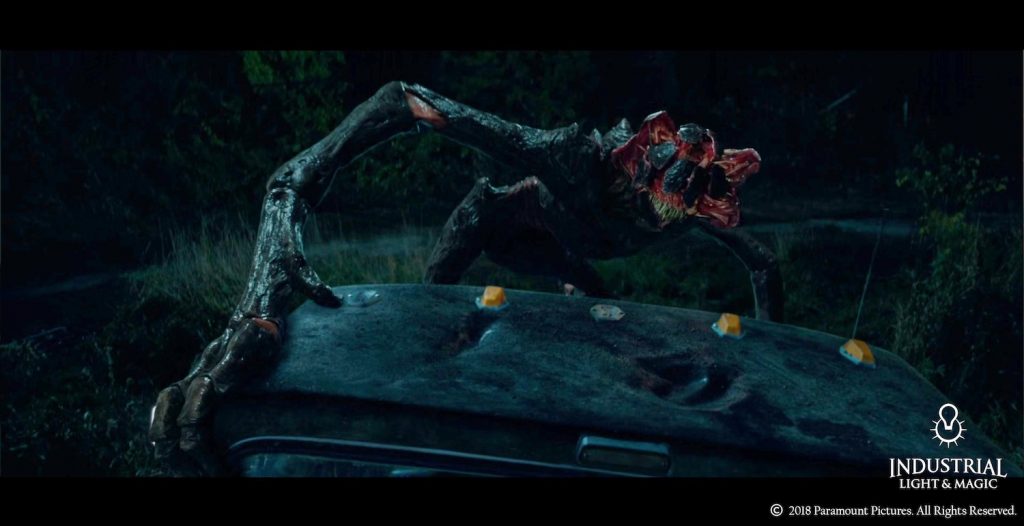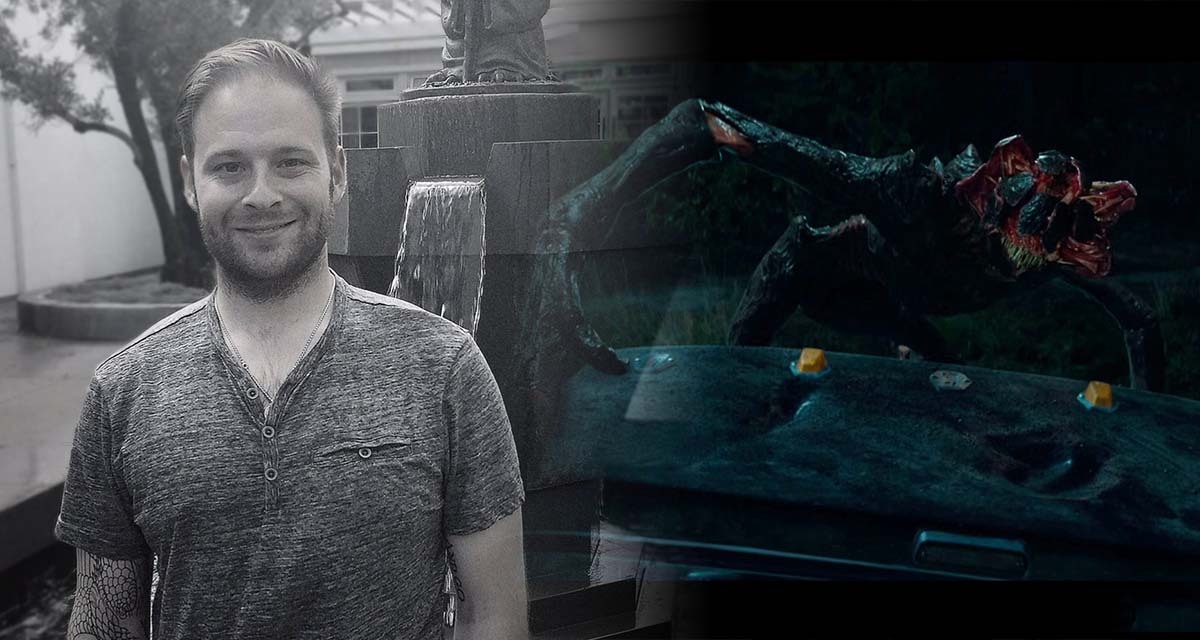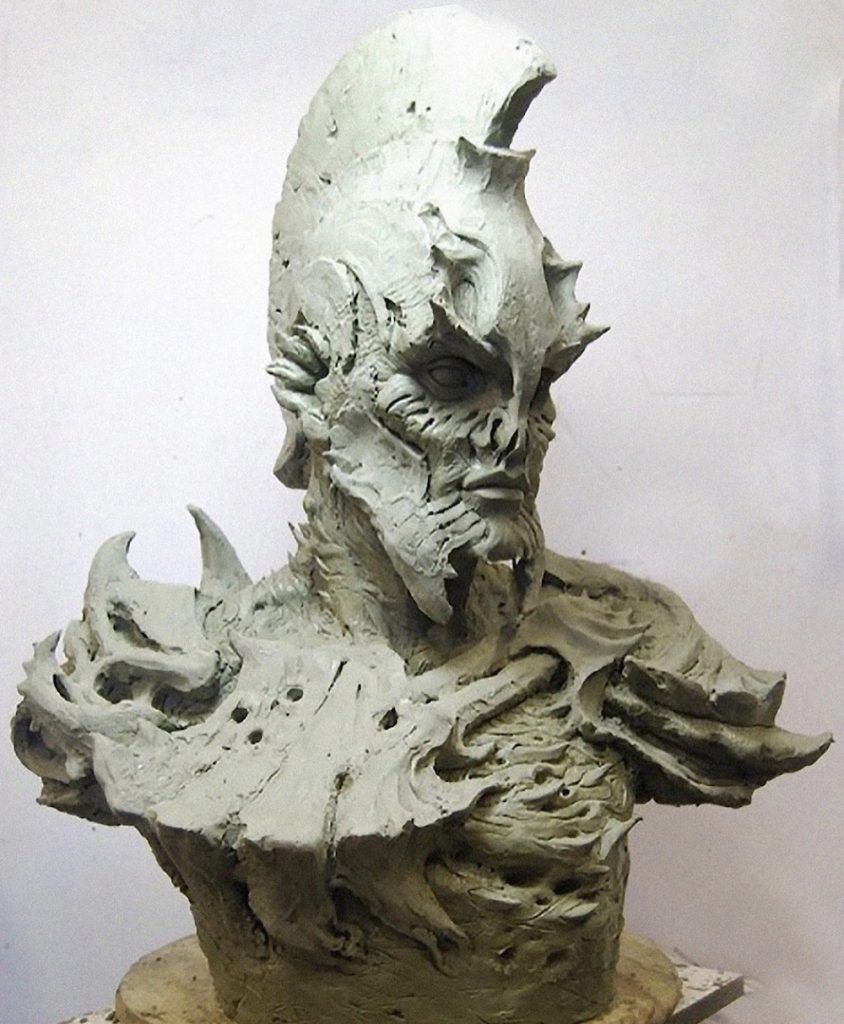Tom Wholley ’11 On Creating Monsters for “A Quiet Place”
Today at 1 p.m. Eastern Time, many of the creatures straight from Tom Wholley’s ’11 imagination will fill thousands, maybe millions of screens across the world as Halo Infinite—the latest installment of the Halo video game series—goes live.
Before Wholley became a character artist for 343 Industries, he was once an art major at Gordon studying graphic design. “My Gordon experience was incredible,” he says. “More than anything, Gordon gave me a great compass for how to navigate life and how to carry myself as a Christian man.”
After graduation, that compass pointed Wholley to Los Angeles where he studied 3D modeling and texturing at Gnomon, popularly dubbed the “MIT of visual effects”. From there, he worked on the 3D Prop Team for Blur Studio (known for game cinematics) and was hired as the first junior creature modeler for Industrial Light and Magic (ILM), a Lucasfilm company. At ILM, Wholley co-designed several of Hollywood’s most terrifying and heroic creatures—most notably the aliens from A Quiet Place and the Decepticon Transformers in the Transformers prequel: Bumblebee. So, naturally, The Bell interviewed Wholley to find out what it takes to make a monster—for the big screen and millions of players worldwide.
Monsters Are Based on What We See in Nature
During the production of A Quiet Place, director John Krasinski looked to Industrial Light and Magic to create a monster that had the physique of a bat and a face that resembled a school of fish. With that direction and heaps of reference material, Wholley and his team got to work. “In creature design, it’s all about finding certain things in nature you infuse into whatever fictional creature you’re making,” he explains. “It’s a good rule of thumb to break any creature down to three different animals. You mash them together and you get something that is completely new. It’s alien, but still grounded.”
“In creature design, it’s all about finding certain things in nature you infuse into whatever fictional creature you’re making,” he explains. “It’s alien, but still grounded.”
The other sources of inspiration for the Quiet Place monsters, he says, were mummies and carnivorous plants. Knowing this, a movie-goer or at-home viewer can examine these monsters and see which details Wholley and the senior creature modeler adapted from nature. The monsters’ skin resembles that of an Egyptian mummy, their oversized limbs mimic a bat without wings, the moving plates on their faces are like a school of fish, and their mouths bring to mind a Venus flytrap or a Cape sundew curled around its insect prey.

Monsters Have Their Own Anatomy and Physiology
Once the team had a solid prototype of the Quiet Place monsters, they sent their digital model to the animators for range of motion testing. “Then, the animator put digital bones, known as ‘the rig’, in our model to iron out how it should move,” elaborates Wholley. “They tried to make it run or stretch out its arm. Whenever the model wasn’t working well, I went back to tweak it until it could pass all their tests. . . it was a lot of fun—that whole process of making the monsters functional.”
Even though the Quiet Place monsters are fictional, they have an on-screen physicality to them. Wholley had to make sure their digital model had enough functionality to climb a car, swim in a flooded basement and run through the woods at lightning speed.

Monsters Are Not the Point of a Scary Story
Strange creatures may spark our curiosity or give us an adrenaline rush when watching a suspenseful movie, but they aren’t the main attraction, according to Wholley. “A good story is grounded in human nature. There must be a whole lot more than gore or shock factor,” he says. “The monsters should live in your imagination.” For Wholley, all it takes is two notes on the piano to recall the great white shark from Jaws or seeing ripples in a glass of water to imagine the footsteps of the Jurassic Park T-Rex that’s escaped from its enclosure. “In A Quiet Place, with little to no dialogue in the first half of the film, the viewer it able to instinctively pick up on the deadly threat of the creatures,” explains Wholley. “But when it comes down to it, this is a story about a father willing to do anything for his children. Even with Jurassic Park, it’s not about the dinosaurs; it’s about family.”
“A good story is grounded in human nature. There must be a whole lot more than gore or shock factor,” he says. “The monsters should live in your imagination.”
In a person-versus-nature story, a monster creates external challenges that force the main characters to grow in bravery, selflessness, compassion, guile or some combination of the four. “The creature can’t just be something to shoot at,” says Wholley. “It should advance the story.”
But just because monsters serve a critical role in a thriller or horror film, or premise of a video game, doesn’t mean that Wholley wants to make the same choice as Dr. Frankenstein—however tempting. When asked if he would bring his creature to life if he had the option to, he says, “It would be cool to give what’s in your imagination a physical form. 3D printers can print sculptures I’ve done. That’s the closest thing I’ve ever experienced to that—but let’s keep the Quiet Place monster on the screen and in the audience’s imagination for now.”
To see more of Wholley’s work, check out his website or his full portfolio on Artstation. You can also follow him on Instagram (@_tw28) to see his latest projects.
Header image caption: Wholley’s first day at ILM by the Yoda fountain
 The Bell
The Bell
